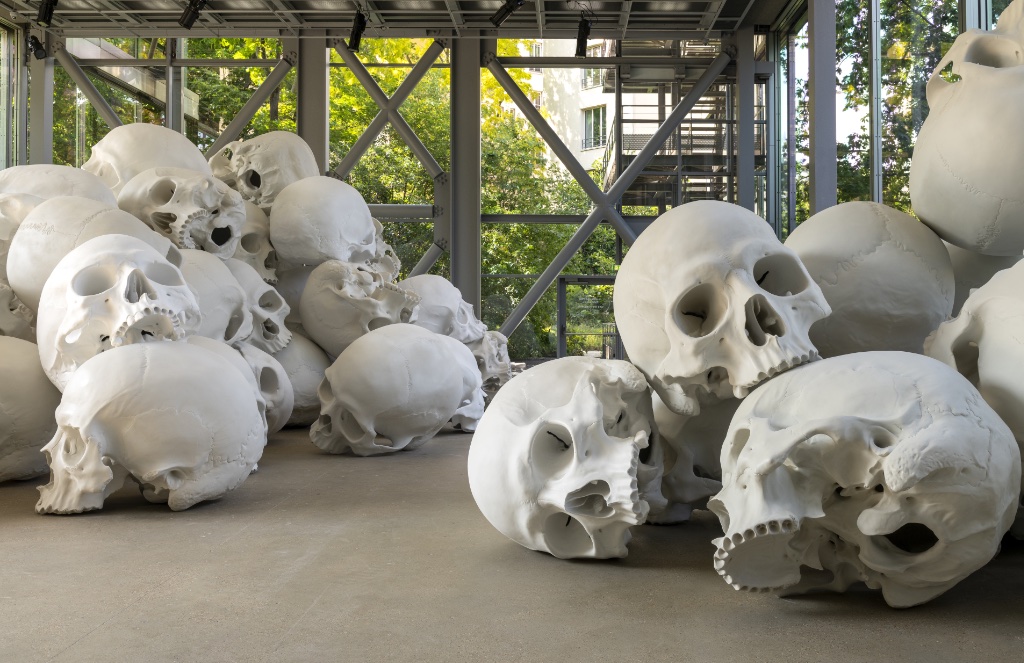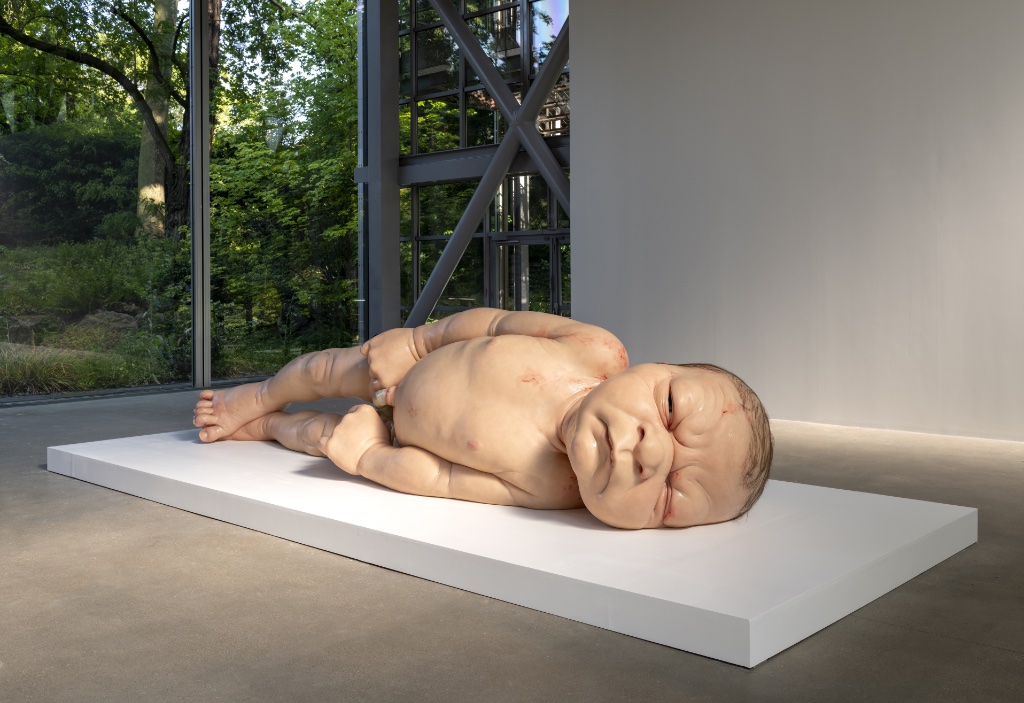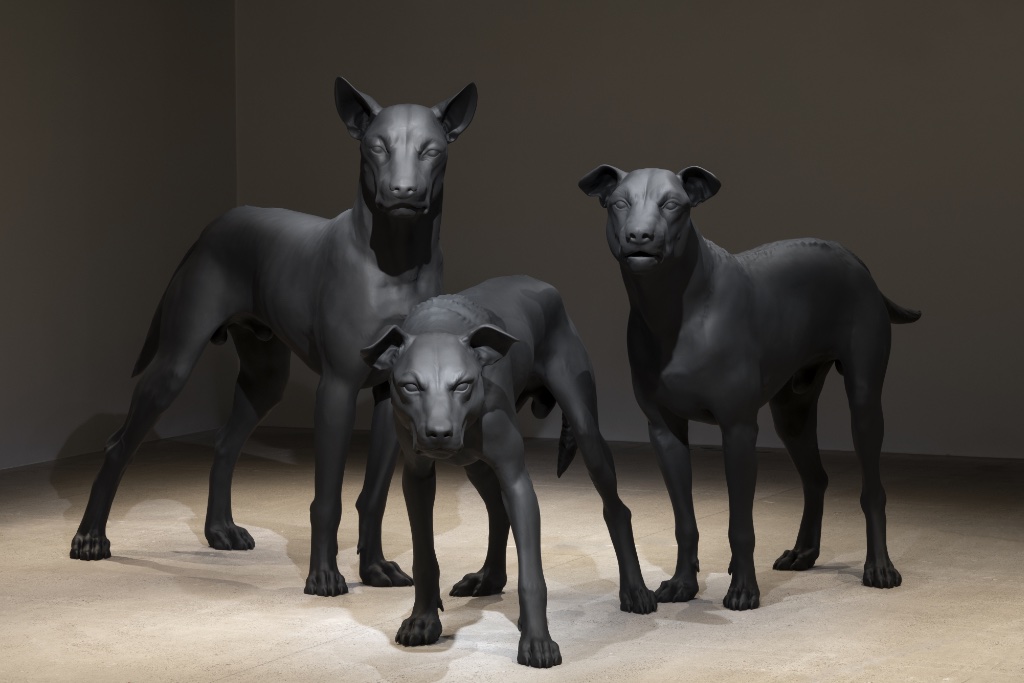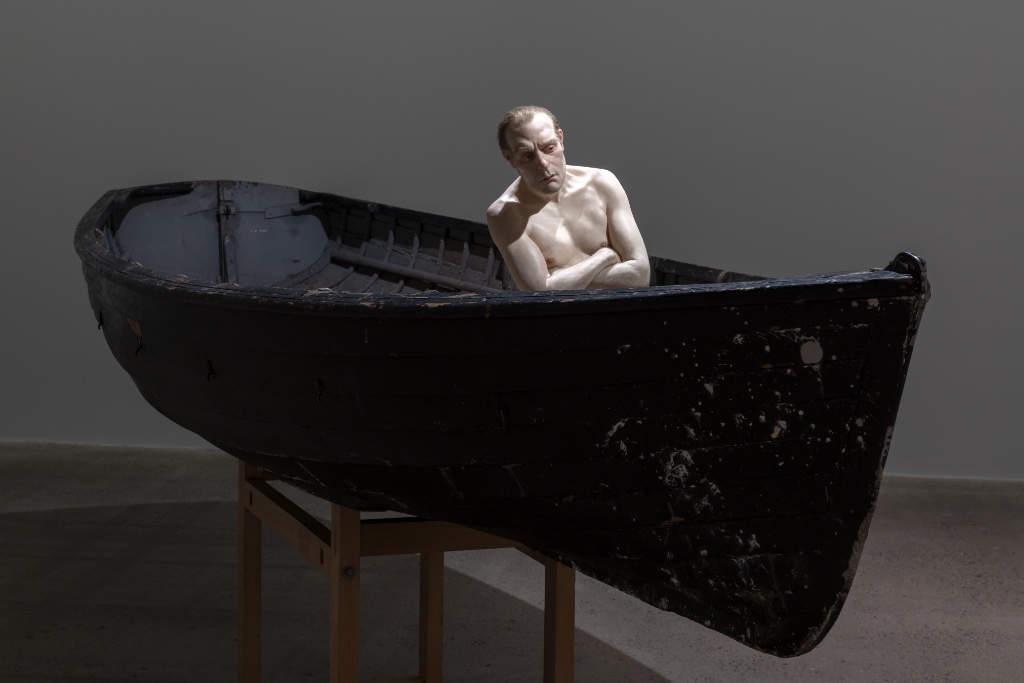
If art is about having a visceral effect on viewers, then Ron Mueck is a true artist.
On entering the exhibition of his work at the Fondation Cartier, visitors are confronted with the amazing sight of piles of supersized skulls (one hundred of them), which together form what might be the world’s biggest vanitas, “Mass” (2017). At first glance, they all look the same, but they are not: each is one of three subtly different shades of white and many have slight differences from the others (number of remaining teeth, for example). They are not attached to each other but carefully piled to fit the foundation’s large, light-filled main space. And, Mueck being a demon for detail, each one is realistically appointed with jagged cracks between skull plates and even what looks like frown lines in the triangle of sadness made famous by Ruben Östlund’s recent film of the same name.
For a real visceral shock, however, go into the smaller room on the ground floor, where you will find a gigantic sculpture of a naked newborn baby, “A Girl” (2006). Everything here is straight from nature: the slight traces of blood on the skin; the sparse hair, each one real and individually implanted in Mueck’s studio on the Isle of Wight, even the eyelashes. The cut end of the greenish-blue umbilical cord hangs next to the genitals, flanked by her clenched hands. This is no cute, cuddly baby – true to newborn life, she’s an ugly creature with an angry frown on her face and only one open eye. She does not appear to be thrilled about being born.
Nor does her pendant, a newborn boy, “Baby” (2001), this one miniature and hanging on the wall in the downstairs gallery looking for all the world like a crucifix, with his bent arms held out to the sides and one foot partially covering another. Look into his open eyes, which seem to glare back at you.
“Untitled (Three Dogs),” an installation of three huge dogs in the same room, one of them snarling viciously, does not have the same impact, maybe because for once, Mueck departs from his usual hyperrealistic approach and gives each animal a uniformly matte black surface.
The work in the downstairs side room is more obviously Mueck: in “Man in a Boat” (2002), a small naked man, arms crossed, sits hunched in a large (real) rowboat, his (real, of course) hair almost as sparse as that of the newborn baby. His head cocked, he appears to be looking at something with curiosity. Why he is naked and oar-less in a rowboat is a mystery for which each viewer can make up his or her own story.
To learn more about Mueck’s background and working methods, see Leaf Arbuthnot’s review of his 2013 show at the Fondation Cartier.
See our list of Current & Upcoming Exhibitions to find out what else is happening in the Paris art world.
Favorite


